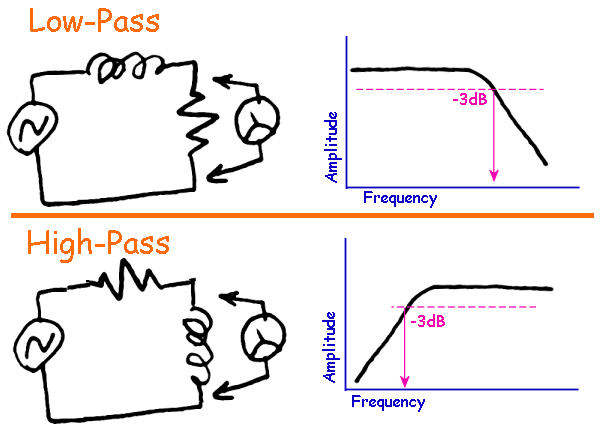>
the procedure to find the inductance
This is basic AC Theory. You need to swallow some R-L-C concepts if you are going to do fancy audio.
Put a coil and a resistor in series from a variable frequency AC/Audio source. Measure the voltage across the coil or the resistor. There are two cases:
You may recognize these from loudspeaker cross-over networks.
At the frequency where the output is 3dB down from the "flat band", the reactance of the coil is equal to the resistor. Coil reactance formulas can be found. When you want frequency in Hertz they will have 2Pi in them. In fact coils are easy: Z = 2*Pi*F*L
There is theory and there is real-world. All coils have dead resistances as well as inductive reactance, and for many audio chores we are lucky to get the inductive reactance "much" higher than the dead resistance. So TIP: measure the DC Ohms (plain ohm-meter) of the coil. Multiply that by about "10". Use a resistor of about that value.
Abbey's L-C technique is fine. More accurate. But with true mystery coils there is the question of what capacitor and what resistor to start with. Probably more likely to get confused.
>
a project to simulate electric guitar pickup inductance...
Ah. Then in some sense your parameters are "fixed". You want to resonate with 300pFd-1,000pFd at about 3KHz to 5KHz (the value of guitar-cord capacitance and guitar pickup/cord resonance). So you could just set up your circuit between bland source and flat amp+speakers, and swap coils until you hear "a rise of the Zing" which makes the source more guitar-y. And as a first-cut, you "know" the coil has to have a DC Resistance nearly as high as a guitar pickup, thousands of Ohms. You can set-aside any coils showing less than maybe 500 Ohms. (Or re-compute the filter with large C and low R, but you may not yet be ready to do that.)
>
a project to simulate electric guitar pickup inductance...
There *is* a $3 transformer which happens to have about the right inductance for "guitar pickup". I do not recall the number, but I would be looking at cheap 10K windings. Specific experince can be found on fuzz-box forums. (Many fuzzes rely on "seeing a pickup" to get the right effect, so fake-pickups are needed in many-effect guitar pedal boards.)







































